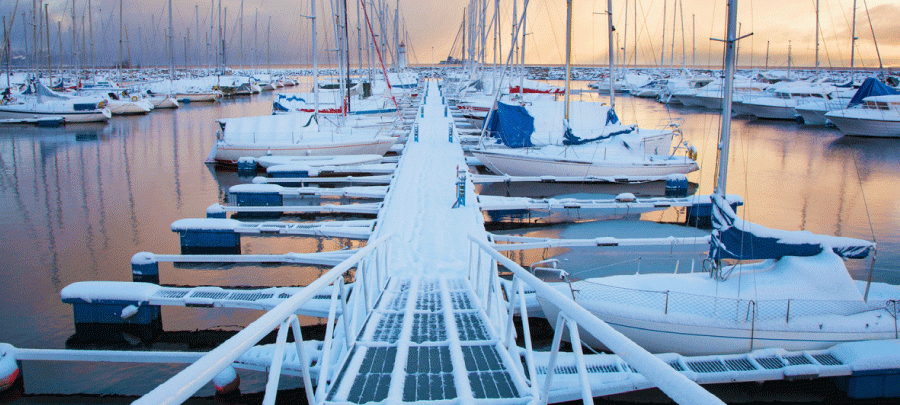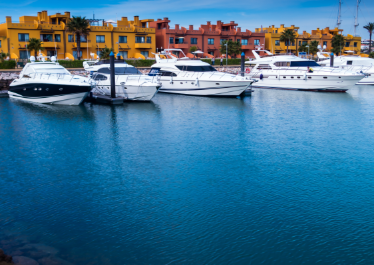Winterization: how to increase your battery life?

During winter storage, boat batteries self-discharged. Depending on the type of battery (AGM, GEL or Lead), typically self-discharge rate from 3% to 10% per month. When your boat is docked, it is therefore important to maintain its batteries so that they do not end up below the recommended discharge rate. In this article, we offer you a list of best practices. By applying these tips, you will be able to significantly improve the life of your marine batteries despite the winterization period.
Winterization and self-discharge of batteries: an unavoidable phenomenon
Self-discharge is a phenomenon that can be observed in any type of battery when it is not used. This fact is all the more observable with marine batteries. It is not a manufacturing defect. On average, with your pleasure boat, you will not spend more than 21 days at sea during the summer period. The rest of the year, it remains at the quay. This is called winterizing.
Over an inactive period of about 7 months, the battery of your boat will have lost between 20% and 70% of its capacity. Below 50% of charge, a phenomenon of sulphation can occur: a whitish layer resembling powder appears on the battery terminals. Sulfation is the first sign of battery degradation. To protect your batteries from this phenomenon, which can make them dead, it is advisable to charge them regularly. Some boat storage companies offer battery maintenance services.
High-performance batteries to last through the winter
Before giving you some advice on how to maintain your battery during winter storage, we recommend that you choose your marine battery according to its ability to withstand discharge.
Indeed, as mentioned above, some batteries hold up better than others:
- With a self-discharge rate of up to 10% per month, lead-acid batteries require a periodic charge every 2 months. Yet these are the most widely used batteries on boats. If the battery is lead/calcium, it is possible to space out the charges a little more since their self-discharge rate is 6% per month.
- Thanks to their low self-discharge rate, between 2 and 3% per month, gel and AGM batteries do not often need to be recharged during the winter. So, while these batteries are often more expensive, they guarantee discharge resistance and durability that make all the difference.
In general, it is advisable to be vigilant as soon as a battery drops below 30% of charge.
Read also: How to improve the life of a marine battery?
5 good practices to take care of your batteries during wintering
Maintaining your marine battery should be a priority, particularly during winter. Ignoring the warning signs or neglecting good practice can lead to a complete discharge of your battery and considerably reduce its lifespan.
1. Optimum charge rate at the start of wintering
After your last boating trip remember to fully recharge your battery after your last boating trip, even if you don't need it for a while. You can use a small battery tester to ensure your battery is fully charged. This is fitted with clips to plug into the terminals.
We recommend allowing the battery to stand for at least 2 hours after charging for a reliable battery test. When using a voltmeter, the starting level of the measurement must be set to 12V. For 100% charging, the voltage number is 12.7 V for a standard lead acid.
2. Disconnect the battery
Once the battery has been fully charged, it's important to disconnect it from the boat's electrical system. The boat’s electrical equipment use a small current even in stand-by, even when not in use.
This small discharge is very small and is only noticeable over time. If you are away for several months, it is likely that your marine battery will drop to 50% charge. The terminals could degrade, making it impossible to fully charge the battery.
To avoid this, you can simply unplug the battery using a battery switch to avoid this. The ideal solution is to use a double pole battery switch, which disconnects both the positive and negative circuits of the battery. Without one, start with the negative terminal, then the positive terminal to avoid a short circuit.
It's also possible to disconnect the terminals, which also makes them easier to maintain and grease.
Please note: During winter storage, we strongly advise against leaving the charger permanently connected throughout the winter season. While this is not harmful to the battery, it does present a significant risk of overheating and fire.
3. Checking the condition of the marine battery
This step comes after the battery has been disconnected.
Time and the marine environment do not help to maintain a battery in good condition. Oxidation and corrosion of the terminals are common. You can prevent this by cleaning your batteries. To do this:
- Wear protective vinyl gloves
- Put baking soda paste on a toothbrush
- Scrub gently
- Rinse with water and let dry
If you have a vented lead-acid battery, you can add distilled or ionized water in case the lead plates are not completely covered with electrolyte (the conductive substance that allows the battery to function). For a sealed lead-acid or lithium-ion battery, no additional maintenance is required.
4. Decide where to store the battery
As a general rule, a battery discharges less quickly in a dry, cold environment than in a warm, humid environment. In fact, contrary to popular belief, self-discharge is faster at a temperature of 25°C than at 6°C, for example. This is why you can choose to winterize your battery either on land or on your boat. So always store your battery in a cool area. The storage location depends on certain conditions:
- On land, the battery should ideally be stored indoors, but at a temperature close to that of the outdoors. If you can't recharge it throughout the winter, make sure that the components are strong enough to keep the discharge rate to a minimum.
- On a boat, the battery can be recharged more regularly if you run the engine occasionally. What's more, you kill two birds with one stone: you take care of the engine and the battery simultaneously! Recharging on a boat also lets you keep your bilge pump in working order over the winter. If you can't make yourself available, you can also invest in a 10 to 15W solar panel connected to the battery, which ensures that it is always charged during the winter. If you don't have either of these, the best option is to disconnect the battery to avoid excessive discharge.
In both cases, the battery's storage location must be easily accessible so that you can monitor the voltage and recharge it if necessary.
5. Charge your battery regularly
Depending on the battery technology, you may have to recharge your battery, even if you have taken all the precautions described above. This is especially recommended if you have an older lead-acid battery technology. We recommend recharging your battery at least every two months to prevent the risk of deep discharge.
Even though it may seem burdensome, this maintenance step should not be skipped. We remind you that the complete discharge of a battery can lead to its complete destruction. So, if you're away from your boat's mooring or unable to recharge your battery regularly, check with your local harbor office to find out about the recharging services. At least some chargers have a dedicated winter charging cycle. The charger will perform a one-hour charge cycle every 7 days to compensate for the natural self-discharge of the batteries. This applies to the PRO range from Dolphin, for example.
Winterizing: Choosing the right equipment
While the impact of maintenance on the life of your boat battery is undeniable, it's just as crucial to opt for a high-quality battery and equip yourself with the right recharging equipment, such as those in Dolphin's PRO range.
Read also: Which battery charger for your boat?
Our series of PROLITE battery chargers, specially designed for marine batteries, are ideal for ensuring proper battery maintenance during wintering. Our chargers feature dedicated charge cycles to counter the natural self-discharge of batteries, ensuring their preservation even during long periods of inactivity. Equipped with Bluetooth technology, our chargers are suitable for outboards and sailboats. Take care of your batteries. Discover our range!



